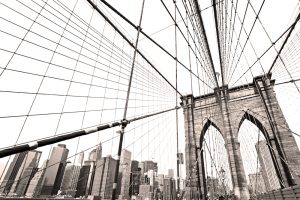Transformational! That’s what New York Gov. Andrew Cuomo’s plan to “reimagine” the state’s bridges and tunnels is being called. Cuomo’s “New York Crossings” project, unveiled this week, addresses traffic congestion, security, flood protection, public art and promoting energy conservation.
Cuomo’s plan add resses long-term transportation issues that affect growth and will help keep the state competitive, safe and more efficient. With a $100 billion price tag, the plan would also create jobs for New Yorkers and open up millions of dollars’ worth of government contracting opportunities for businesses of all sizes.
resses long-term transportation issues that affect growth and will help keep the state competitive, safe and more efficient. With a $100 billion price tag, the plan would also create jobs for New Yorkers and open up millions of dollars’ worth of government contracting opportunities for businesses of all sizes.
Cuomo said transportation efforts in the state in the past to increase mobility and access have sustained the state for decades. But, he added that the state has been lax since then in investing in bridges, tunnels or major pieces of infrastructure.
The governor called his plan the most aggressive transportation plan in the country – representing the largest amount ever invested in infrastructure and construction in the state.
Among the projects that are planned as part of the New York Crossings proposal include:
- Increasing the capacity of the Long Island Railroad by building a second and third track;
- A 100 percent replacement of LaGuardia Airport;
- Addition of an air train from LaGuardia directly to Penn Station; and
- Four new Metro stations in the Bronx to help develop under-developed areas there.
Bridges and tunnels over the years have provided access from the harbor, connecting places around the water. That has created bottlenecks of traffic relative to bridges and tunnels. Cuomo sees mass transit as the best solution to mitigating traffic on the most congested roads in the country. His plan also includes a switch from stopping at toll plazas to pay tolls to automatic tolling, which would eliminate the need for traffic to come to a standstill, adding hours to commute times.
As the nation faces increasing terrorist threats, the need for additional security for transportation infrastructure grows exponentially. The governor’s plan to combat terrorist attacks on infrastructure depends on the use of state-of-the-art emerging technology at Metropolitan Transit Authority (MTA) facilities and on crossings. More than 500 Triborough Bridge and Tunnel Authority officers will be trained in anti-terrorism tactics and 150 new State Troopers will be added to help secure crossings. And instead of planning for a 100-year flood, New York would instead plan for a 500-year flood, with barriers to block floodwater from entering tunnels as it did during Hurricane Sandy.
Energy conservation regarding state crossings will include installation of energy-efficient LED lighting on MTA bridges and facilities to save energy and money. Cuomo would take the lighting a step further, announcing his plans to use lighting – in some cases a variety of colored lights – as an artistic measure that will provide the state with another economic driver. He sees those lights on bridges becoming a tourist attraction. He pointed out that the lighting of the Bay Bridge in San Francisco has generated more than $100 million in economic activity.
Cuomo says some of the projects are already under way and others will be completed and functional as early as next January.
The governor has identified sources for some of the necessary funding to carry out his plan, including revenue from the MTA capital budget and federal money as part of Storm Recovery Funds made available following Hurricane Sandy.
Watch this proposal closely. If it gains support and is approved, millions of dollars’ worth of government contracts could result for private-sector firms. And opportunities for collaborative efforts such as public-private partnerships (P3s) would also be available.
